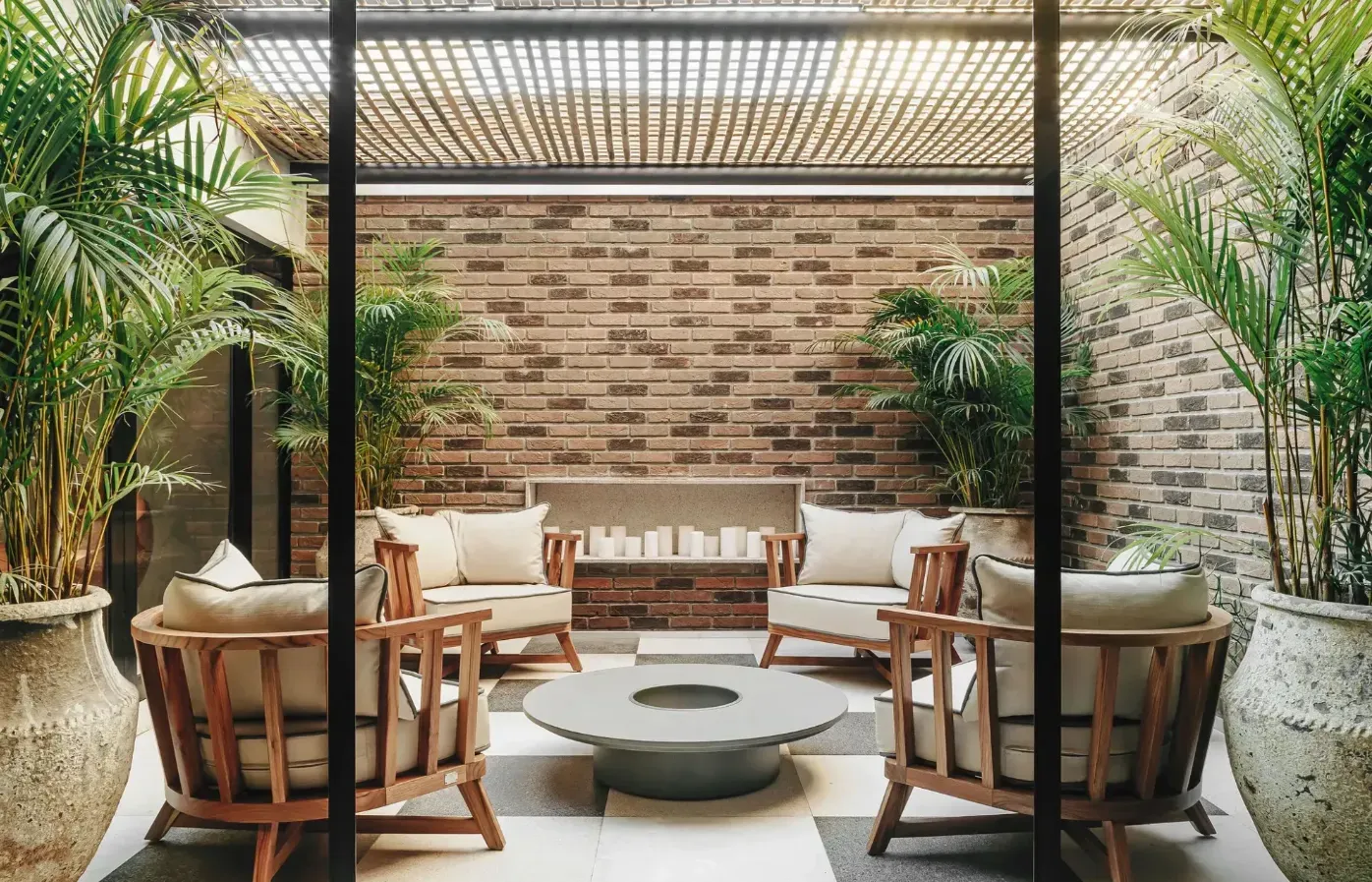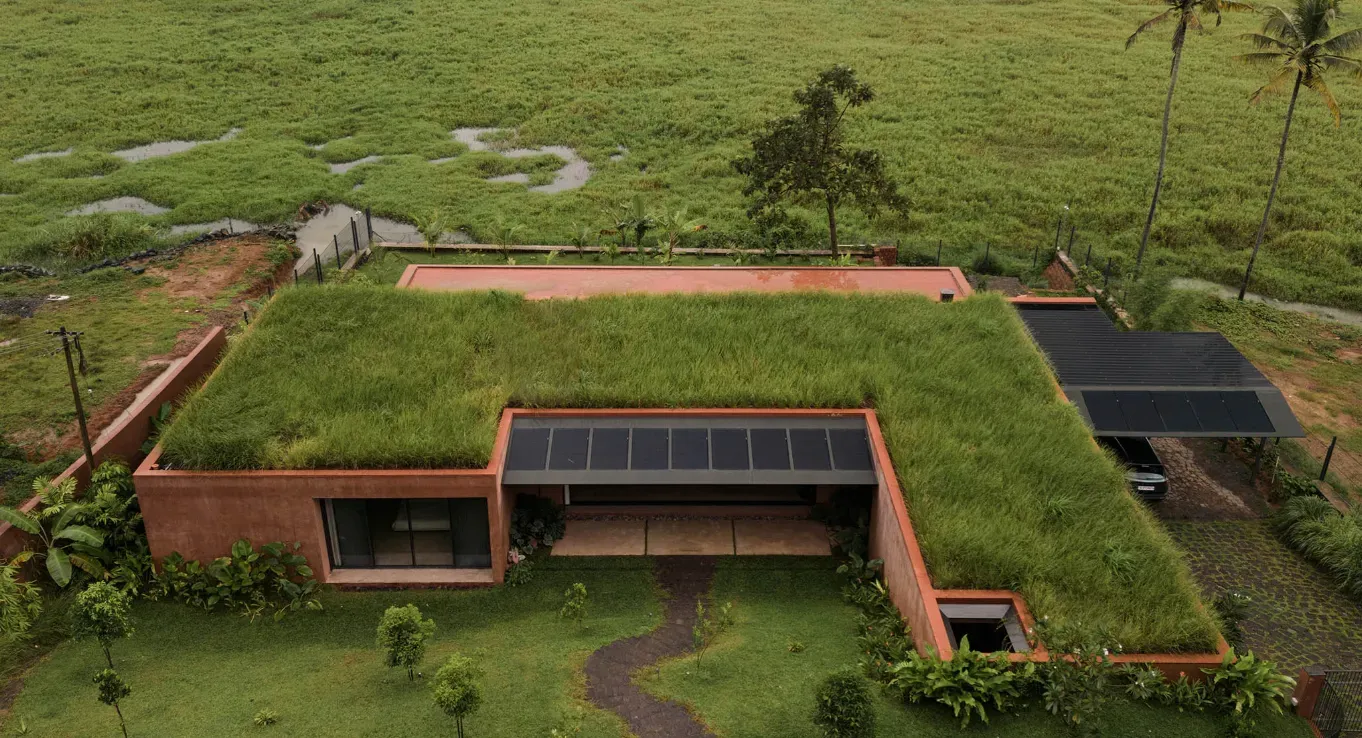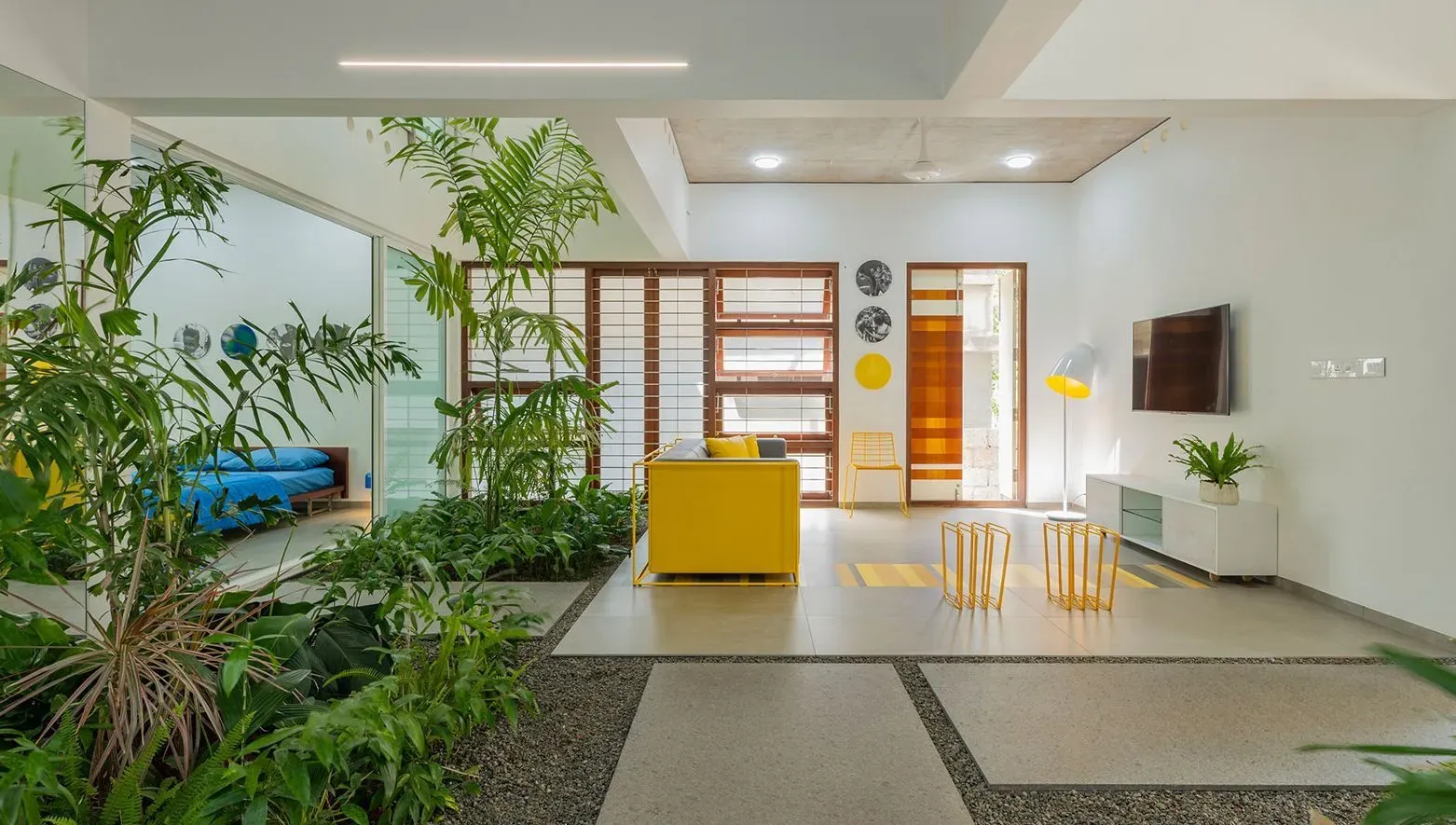Bringing the Outside In: Creating a Biophilic Home Design in Urban India

By
Shrusti Naik
Posted on August 26, 2025. 10 mins

Bringing the Outside In: Creating a Biophilic Home Design in Urban India
Introduction

In India’s rapidly urbanizing landscape, where over 37% of the population already lives in cities and this number is projected to cross 40% by 2030 (Source: Invest India, 2025), the connection to nature is diminishing. High-rise apartments, shrinking green cover, and polluted air leave city dwellers craving environments that nurture both mind and body. This is where biophilic design, the practice of integrating natural elements into living spaces, becomes more than just an architectural trend; it is increasingly a health and lifestyle necessity for urban Indian families.
Global research has shown that biophilic homes reduce stress, enhance productivity, and improve mental well-being. In India, where urban stressors like long commutes, rising pollution, and limited living space dominate everyday life, the biophilic approach offers a practical solution to make homes healthier, calmer, and more connected to the natural world. Might as well take a look at The Resurgence of Traditional Indian Architectural Elements in Modern Homes.
The Essence of Biophilic Design in Indian Homes
At its core, biophilic design emphasizes humans’ innate affinity with nature. For Indian homes, this doesn’t only mean adding indoor plants—it involves creating multi-sensory connections with natural elements. From sunlight-filled living rooms to cross-ventilated spaces, and from water features inspired by traditional stepwells to locally sourced wood and stone finishes, biophilic design ties modern living to India’s cultural and ecological roots.
Unlike minimalist interiors that strip spaces down, biophilic design is about adding life. Indian households, already rich in traditions of courtyards, verandahs, and open kitchens, find this design philosophy both culturally relevant and modern in execution. With all this, here is another way to enhance your home by Choosing the Right Color Palette for Each Room
Why Urban India Needs Biophilic Homes
The need for biophilic homes is particularly pressing in India’s metros. Cities like Delhi, Mumbai, and Bengaluru frequently rank among the world’s most polluted urban centers (Source: Business Standard, March 2025). For families spending up to 90% of their time indoors, indoor air quality, natural light, and greenery directly influence health outcomes.
For instance, an apartment in Gurgaon that uses indoor vertical gardens and low-VOC paints not only enhances aesthetics but also cuts indoor pollutants, improving respiratory health. Similarly, incorporating bamboo paneling or jute furnishings promotes sustainability while reducing the carbon footprint of construction.
Moreover, in high-density urban neighborhoods, access to community green spaces is limited. Bringing nature inside the home becomes the most practical way for city dwellers to reconnect with the environment without depending solely on municipal infrastructure. Besides. here are some Design Choices That Can Actually Increase Your Property Value
Practical Biophilic Design Strategies for Indian Homes
A successful biophilic home design in India requires contextual adaptation. Some effective approaches include:
1. Natural Light and Ventilation Maximizing natural light through skylights, large windows, and reflective surfaces reduces reliance on artificial lighting and improves circadian rhythm regulation. Cross-ventilation, a principle already embedded in traditional Indian homes, is crucial in reducing indoor pollutants and cooling naturally.
2. Indoor Greenery From money plants in hanging pots to vertical herb gardens in kitchens, greenery serves dual purposes—enhancing aesthetics and improving air quality. Plants like areca palm and snake plant, known for filtering toxins, are particularly popular in urban Indian homes.
3. Natural Materials and Textures Locally sourced teak, cane, bamboo, or sandstone bring a tactile connection to nature. These materials are durable, eco-friendly, and resonate with India’s artisanal traditions.
4. Water as a Design Element Small water features—whether a tabletop fountain or an indoor pond—introduce auditory and visual relaxation. In Vastu principles, water is also associated with prosperity, making it culturally significant.
5. Biophilic Smart Homes Emerging tech-enabled designs are integrating nature with convenience. Automated irrigation systems for indoor plants, smart blinds that optimize daylight, and air sensors that monitor indoor air quality are increasingly entering urban Indian homes.
The Economic and Lifestyle Case for Biophilic Homes
A growing body of research shows that homes with biophilic features command a premium in the real estate market. A 2024 Knight Frank India report highlighted that properties with eco-friendly features in metros like Mumbai and Bengaluru saw 7–10% higher resale value compared to conventional apartments.
On the lifestyle front, families report lower stress levels, better sleep, and improved productivity in such environments. For India’s work-from-home professionals, a home office surrounded by greenery or natural textures can provide a significant cognitive boost. In a country where mental health is gaining policy-level attention (Source: Mint, January 2025), designing homes that contribute to wellness is not just aspirational, it’s becoming essential. Also check out Fractional Ownership of Real Estate in India 2025
Challenges and Misconceptions
Despite its benefits, biophilic design in India faces challenges. Many assume it requires large spaces or high budgets, but in reality, even compact 2BHK apartments can integrate elements like indoor plants, bamboo blinds, or balcony gardens. Another misconception is that maintenance is labor-intensive. However, modern design solutions—such as hydroponic indoor gardens or automated watering systems—are making biophilia accessible to busy urban households.
Builders and architects also need to play a larger role. While luxury developments in cities like Gurugram and Pune are beginning to incorporate biophilic features, mid-income housing often overlooks them. With growing consumer awareness, however, demand is likely to shift, pushing developers to adapt. Besides, take a look at these Kid-Friendly Interiors That Aren’t an Eyesore
Conclusion

As Indian cities grow denser and natural landscapes recede, biophilic home design offers a way to reclaim balance between urban living and nature. It is not just an architectural philosophy but a lifestyle shift—one that addresses health, sustainability, and cultural continuity.
For the Indian family navigating the challenges of urban life, a biophilic home is more than an aesthetic choice—it is an investment in well-being, resilience, and long-term value. The next wave of urban housing in India will likely be judged not only by square footage or amenities but also by how well it brings the outside in.
For those in pursuit of their dream home, investment opportunities, or a sanctuary to call their own, Jugyah provides top housing solutions with its intelligent technology.
Frequently Asked Questions
Q1. What is biophilic home design? Biophilic design integrates natural elements like light, greenery, water, and natural materials into living spaces to improve health and well-being.
Q2. Is biophilic design expensive in India? Not necessarily. While luxury projects may use advanced systems, even small apartments can adopt cost-effective measures like indoor plants, bamboo furniture, or natural lighting strategies.
Q3. How does biophilic design improve health? It reduces stress, improves air quality, regulates sleep patterns, and enhances productivity by creating a calming, nature-connected environment.
Q4. Can biophilic design work in compact urban apartments? Yes, vertical gardens, balcony greens, multipurpose furniture with natural finishes, and clever use of light make it suitable even for small spaces.
Q5. Do biophilic homes have better resale value? Yes, homes with eco-friendly and wellness-driven design features often command a premium in the Indian real estate market due to rising buyer awareness.